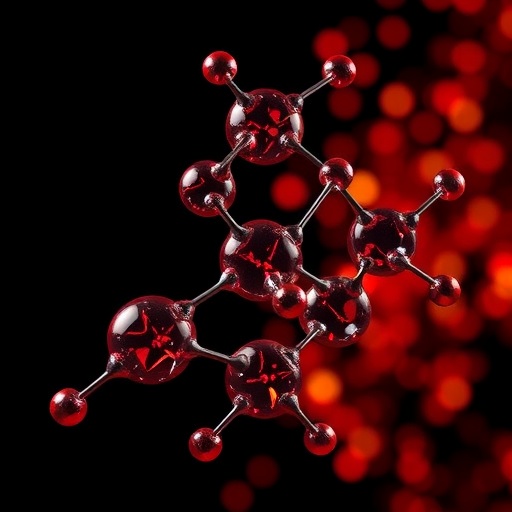In the quest to revolutionize the chemical modification of complex bioactive molecules, a transformative breakthrough is emerging in the selective oxidation of α,β-unsaturated carbonyl compounds. These molecules are distinguished by the presence of conjugated carbon-carbon and carbon-oxygen double bonds, fundamental to their biological function and pharmaceutical relevance. For decades, the challenge has been to precisely target specific carbon-hydrogen bonds — particularly secondary methylene (2° C–H) sites — for oxidation without compromising the delicate olefinic double bonds critical for the compounds’ activity. The latest research from Ahn, Gomez, Hartmann, and colleagues in a landmark 2025 study published in Nature heralds a paradigm shift in this longstanding chemical conundrum.
The heart of the breakthrough lies in the strategic redesign of manganese-based catalytic systems that mediate the oxidation process. Prior approaches to oxidation often fell short due to competing reactions; olefins tend to undergo epoxidation, a transformation that, while valuable in other contexts, destroys or alters the molecule’s pharmacophoric core, thereby undermining its biological efficacy. Even with advancements permitting selective oxidation in the presence of aromatic rings or nitrogen heterocycles, electron-deficient alkenes — such as those in α,β-unsaturated carbonyls — stubbornly resisted precise functionalization at methylene centers. This limitation has restricted the synthetic utility and late-stage diversification of vital natural products and their derivatives.
By ingeniously replacing the traditional carboxylic acid ligands with hydrogen-bond-donating solvents around sterically hindered manganese PDP (pyridine dipyrrolidine) catalysts, the research team has altered the electronic characteristics of the active oxidant species. This subtle yet profound modification engenders a shift toward a more electron-demanding, charge-separated oxidant. Such an oxidant preferentially reacts with electron-rich methylene sites rather than electron-poor olefinic double bonds. The experimentally determined kinetic selectivity ratio, expressed as k_C-H[O]/k_epox = 38.5, underscores the remarkable chemoselectivity achieved: oxidation of the secondary C–H bonds proceeds almost 39 times faster than competing epoxidation.
This finding is unprecedented in the landscape of organic oxidation chemistry. The manganese-based catalyst system now invites synthetic chemists to revisit complex α,β-unsaturated carbonyl frameworks with renewed confidence in late-stage functionalization strategies. The team demonstrated this capability across a diverse suite of 45 molecular substrates, ranging from simple model systems to elaborate natural products. Previously, attempts to selectively modify these structures invariably resulted in undesirable allylic oxidation or epoxidation pathways, thus squandering precious molecular complexity or requiring arduous protective group strategies. The new method sidesteps such pitfalls, unlocking novel analogues and enabling access to metabolites otherwise challenging to synthesize.
Mechanistic investigations lend critical insight into the oxidant’s behavior. The altered oxidation pathway appears to involve a charged transition state that disfavors interactions with electron-deficient unsaturated bonds. Electron-rich methylene centers become the preferred locus for abstracting hydrogen atoms, steering the reaction toward selective hydroxylation without epoxide formation. This nuanced understanding paves the way for the rational design of oxidation catalysts tailored to complex molecular environments, a goal long sought by practitioners of synthetic and medicinal chemistry alike.
The implications for drug discovery and natural product derivatization are profound. Late-stage oxidation allows chemists to efficiently explore structure-activity relationships by modifying molecular sites directly on advanced intermediates or final targets. This bypasses the need for lengthy, multi-step syntheses traditionally required to introduce functional handles, accelerating the pipeline from discovery to application. Moreover, the preservation of sensitive α,β-unsaturated carbonyl moieties ensures that biological activity linked to these motifs is retained or fine-tuned rather than lost.
Beyond the synthetic implications, the chemistry itself sets a precedent in catalysis design. It underscores that even highly reactive metal-oxo species — often regarded as indiscriminately aggressive — can be subtly tuned to achieve remarkable chemoselectivities by manipulating ligand environments and solvent interactions. The work emphasizes the synergy between steric hindrance and hydrogen-bonding solvents as a means of controlling oxidant structure, reactivity, and selectivity at a molecular level. This approach promises new horizons in oxidation catalysis for complex molecular architectures.
The team’s achievements do not only lie in method development but also extend to demonstrating these chemoselective oxidations on complex, functionalized natural products. By leveraging their tailored manganese catalysis, Ahn and colleagues successfully modified a range of substrates exhibiting therapeutic potential. These modifications could reveal new bioactivities or improve pharmacokinetic properties—highlighting the broader impact on medicinal chemistry.
Furthermore, the study unveils a new facet of the role that reaction media play in catalysis. The identification of hydrogen-bond donor solvents as key modulators of active oxidant species challenges conventional dogma that focused primarily on ligand design and metal centers. This advance encourages further exploration of solvent effects as a powerful and tunable element in catalytic reactions.
The researchers also meticulously evaluated reaction kinetics and substrate scope, confirming that this chemoselective oxidation is not an isolated phenomenon but rather a broadly applicable transformation. Such robustness speaks to the potential for widespread adoption in synthetic laboratories and industry scales, potentially transforming late-stage synthetic strategies.
Looking forward, the reported catalytic system offers exciting prospects for the development of novel natural product analogues with improved or modulated biological profiles. It also sets the stage for further innovation in selective oxidation chemistry where once intractable substrates now become accessible for precise functionalization.
The landmark discovery thus ushers in a new era wherein catalytic oxidation is no longer a blunt instrument but a finely honed tool for molecular editing. Through careful orchestration of catalyst architecture, solvent environment, and mechanistic insight, the challenge of differentiating highly reactive sites within complex molecules — especially those involving α,β-unsaturated carbonyls — has been effectively met.
Ultimately, the work by Ahn et al. represents a leap forward in precision oxidation chemistry. As synthetic methodologies evolve, such findings stand to reshape the synthesis of natural products, enable new pharmaceutical developments, and deepen our fundamental understanding of chemical reactivity and selectivity in complex molecular contexts.
Subject of Research: Selective oxidation of methylene C–H bonds in α,β-unsaturated carbonyl natural products.
Article Title: Selective Methylene Oxidation in α,β-Unsaturated Carbonyl Natural Products.
Article References:
Ahn, C., Gomez, A., Hartmann, M.A. et al. Selective Methylene Oxidation in α,β-Unsaturated Carbonyl Natural Products. Nature (2025). https://doi.org/10.1038/s41586-025-09742-0
Image Credits: AI Generated




